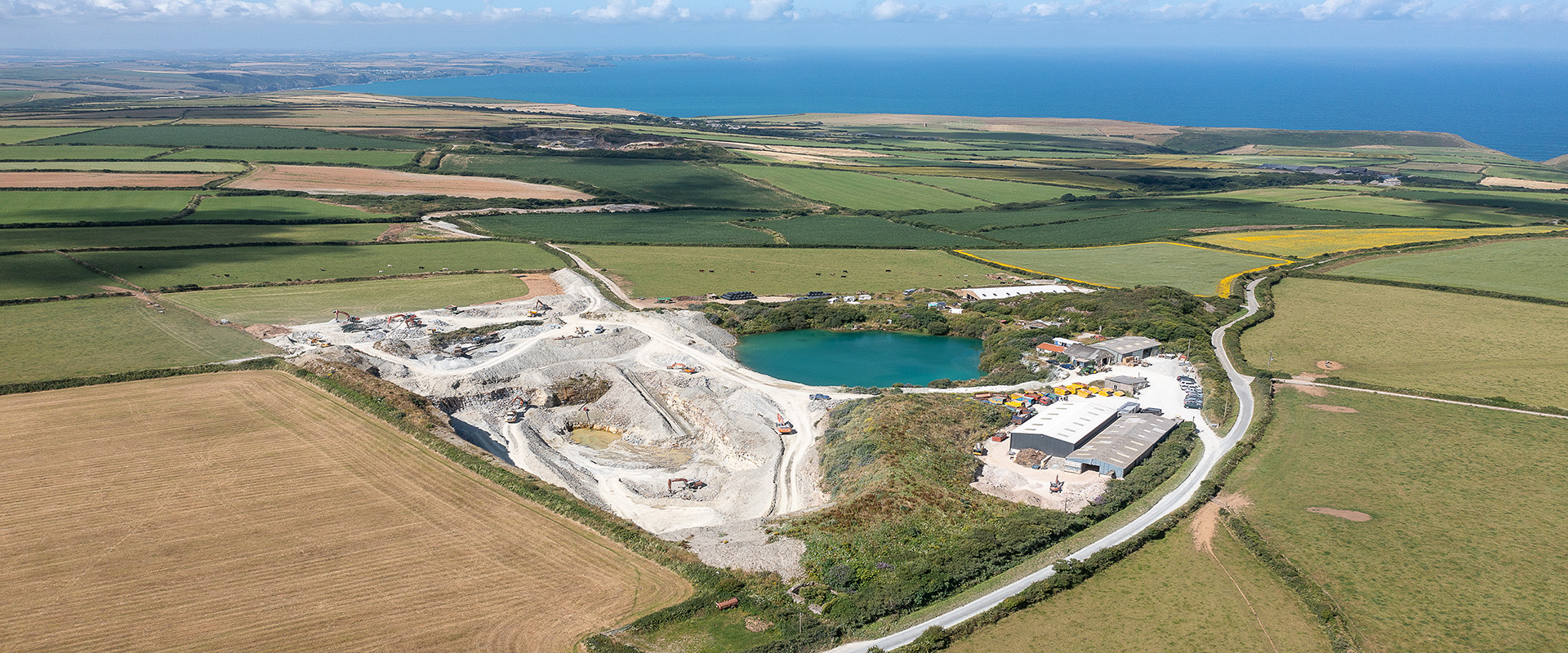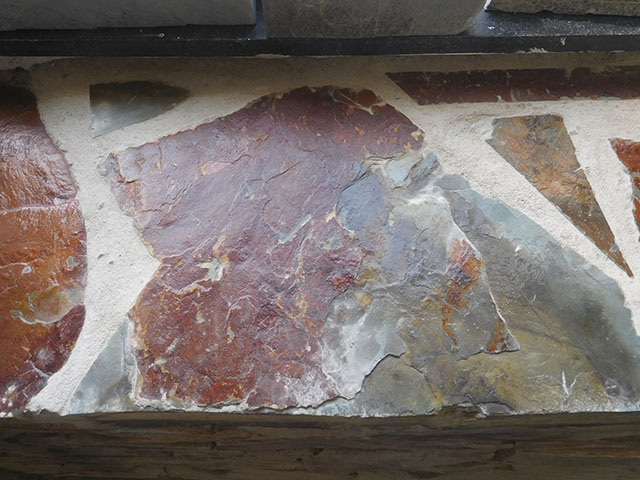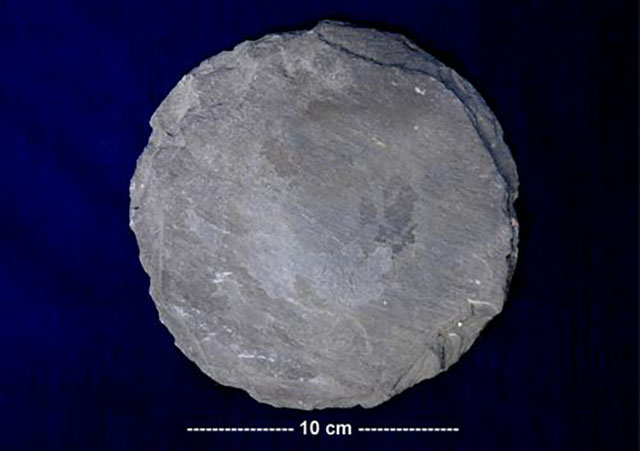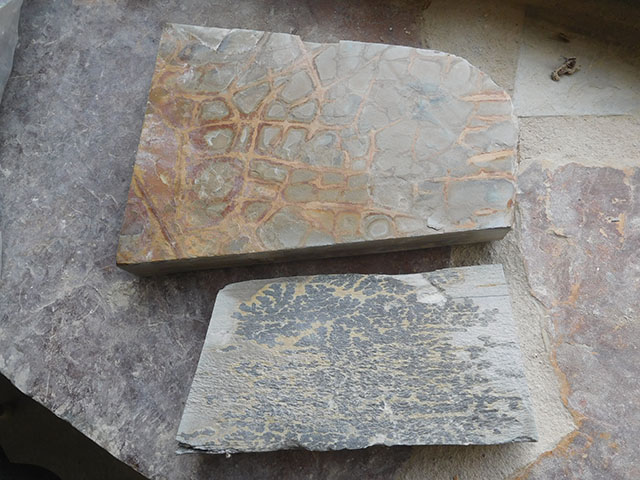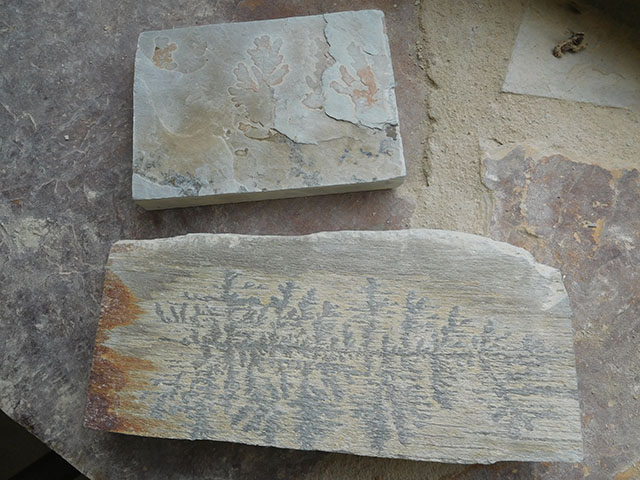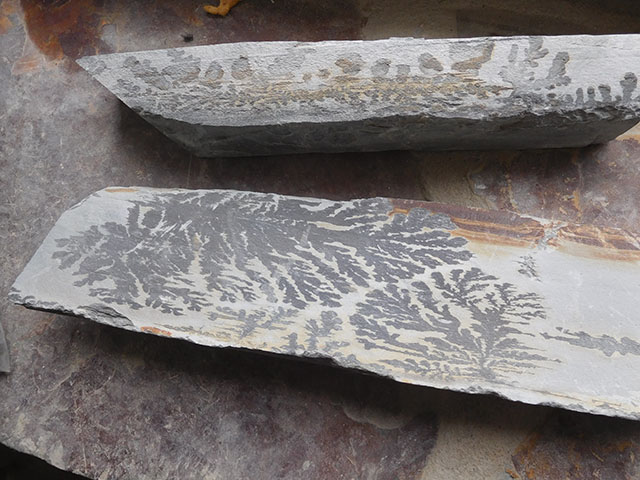Slate is formed from deposits of mud some 400 million years ago. These were later buried, folded and metamorphosed to form slate about 300 million years ago. They say that the original deposits were in the Upper Devonian period and metamorphosed when south west England became joined to the rest of Britain.
The metamorphosis of clay, shale and volcanic ash lead to a rock that cleaves / splits readily into slabs, making it ideal for a range of uses.
Mainly consisting of the minerals, quartz & muscovite or illite, along with biolite, chlorite, hematite and pyrite. Our slate here is predominately a Blue Grey colour but can also have rustic tones and shades.


